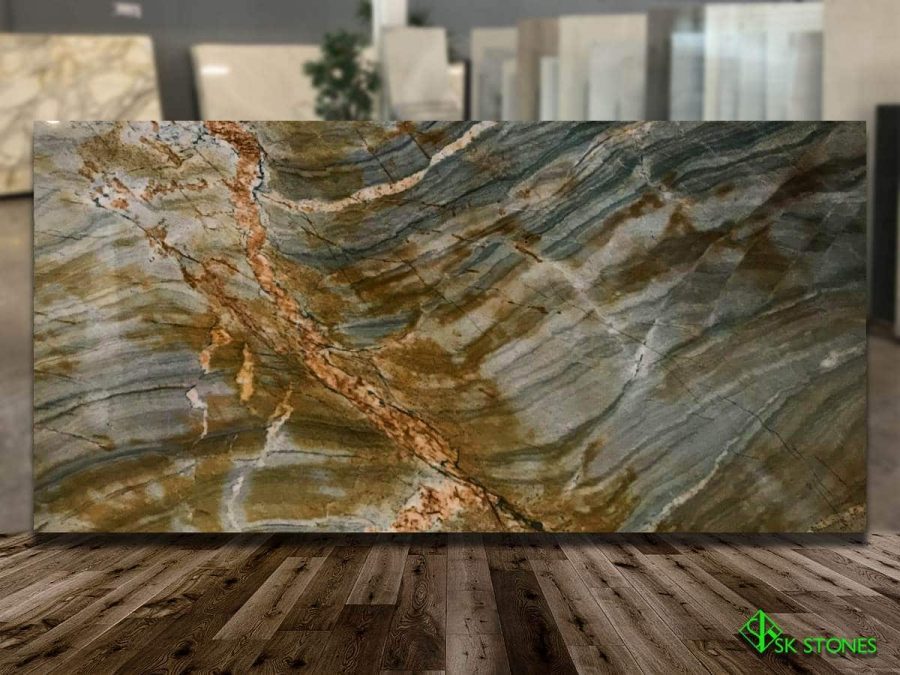Quartzite, often confused with quartz, is a metamorphic rock formed from sandstone subjected to intense heat and pressure. Renowned for its hardness and natural patterns, quartzite has become a popular choice for countertops, flooring, and other surfaces. However, to ensure its longevity, understanding and implementing proper care is crucial.
Understanding Quartzite Characteristics
Before delving into care routines, it’s essential to grasp the unique characteristics of quartzite. Unlike quartz, which is an engineered stone, quartzite is natural and varies in composition. Its porous nature makes it susceptible to staining and etching, emphasizing the need for specialized care.
Avoiding Common Mistakes
One of the common misconceptions about quartzite is its imperviousness to damage. While it’s true that quartzite is more resistant than other natural stones, neglecting proper care can lead to issues such as staining, scratching, and dulling. Let’s explore some preventive measures to keep your quartzite surfaces pristine.
Choosing the Right Cleaning Products
Maintaining quartzite involves using the right cleaning products. Opt for pH-balanced cleaners to avoid damage to the stone’s surface. Acidic or abrasive cleaners can erode the sealant and harm the stone, diminishing its aesthetic appeal over time.
Daily Maintenance Tips
A key aspect of quartzite care is daily maintenance. Regularly wipe surfaces with a soft, damp cloth to prevent dust and debris buildup. Sealing the stone periodically adds an extra layer of protection, enhancing its resistance to stains and ensuring a longer lifespan.
Stain Removal Techniques
Inevitably, accidents happen. When faced with stubborn stains, it’s crucial to address them promptly and effectively. Explore various stain removal techniques, taking care not to use harsh chemicals that can compromise the stone’s integrity.
Does Quartzite Require Sealing?
Sealing quartzite is a topic of debate. Some argue that it’s unnecessary, while others emphasize its importance. In this section, we’ll explore the sealing process and help you make an informed decision based on your specific quartzite application.
Does Quartzite Scratch Easily?
Scratching is a concern for many quartzite owners. Assess the scratch resistance of quartzite and discover practical tips for minimizing the risk of scratches, ensuring your surfaces maintain their pristine appearance.
Heat Resistance of Quartzite
Quartzite’s heat resistance is a significant advantage, but it’s essential to understand its limits. Learn how to handle high temperatures and prevent thermal shock, ensuring your quartzite surfaces remain unscathed.
How to Protect Quartzite Countertops
Countertops are often the focal point of a kitchen. Explore effective ways to protect quartzite countertops, including the use of coasters and trivets to prevent potential damage.
Common Issues and Solutions
Despite meticulous care, issues may arise. Address common problems such as etching and dulling with practical solutions, maintaining the aesthetic appeal of your quartzite surfaces.
Long-Term Durability of Quartzite
Investing in quartzite is a commitment to long-term durability. Understand the factors that contribute to the stone’s resilience and how proper care plays a pivotal role in ensuring your investment lasts a lifetime.
Environmental Impact of Quartzite Care
For environmentally conscious consumers, exploring eco-friendly cleaning options is essential. Discover sustainable ways to care for your quartzite surfaces without compromising the planet’s health.
FAQs
Can Quartzite be Damaged by Acidic Foods?
Quartzite’s susceptibility to acidic foods depends on its specific composition. While generally resistant, prolonged exposure to acids can cause etching. It’s advisable to promptly clean any spills to avoid potential damage.
Is Quartzite Resistant to UV Rays?
Yes, quartzite is resistant to UV rays, making it suitable for outdoor applications. However, prolonged exposure to sunlight may cause slight fading over an extended period.
Can You Use Vinegar on Quartzite?
Vinegar is acidic and should be avoided on quartzite surfaces, as it can lead to etching. Opt for pH-balanced cleaners to maintain the stone’s integrity.
How Often Should Quartzite be Sealed?
The frequency of sealing depends on usage. For high-traffic areas, sealing every one to two years is recommended. However, always follow the manufacturer’s guidelines.
What to Do About Scratches on Quartzite?
Minor scratches can be mitigated with a soft abrasive pad or by consulting with a professional stone restoration expert. Prevention is key; use cutting boards and avoid dragging heavy objects.
Can Quartzite Crack Over Time?
Quartzite’s durability makes it resistant to cracking under normal conditions. However, excessive force or sudden temperature changes can lead to structural issues. Practice caution to prevent such incidents.
Conclusion
In conclusion, caring for quartzite is a nuanced process that requires a balance of preventive measures and effective solutions. By understanding the stone’s characteristics and following the outlined care routines, you can ensure your quartzite surfaces maintain their beauty for years to come.





